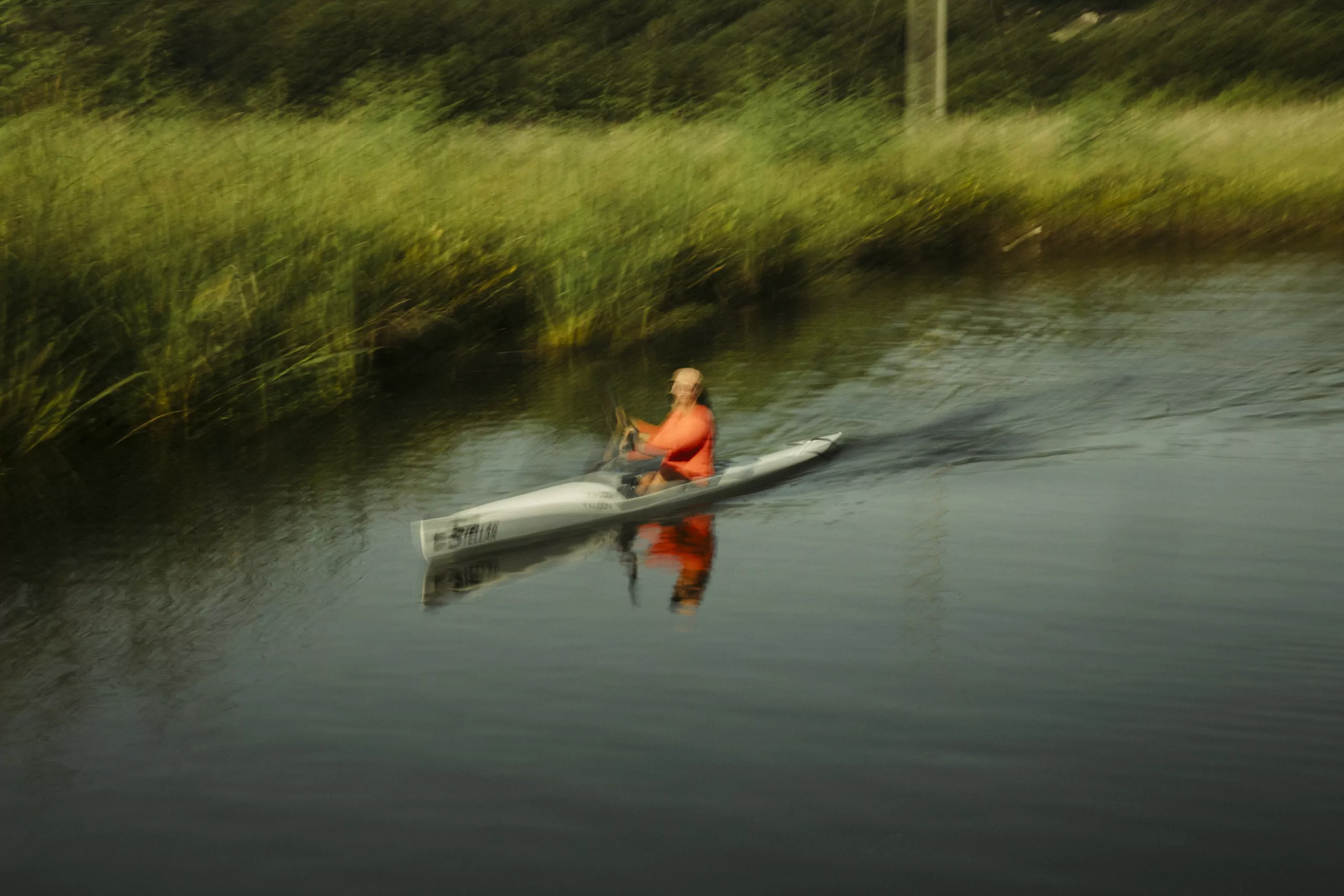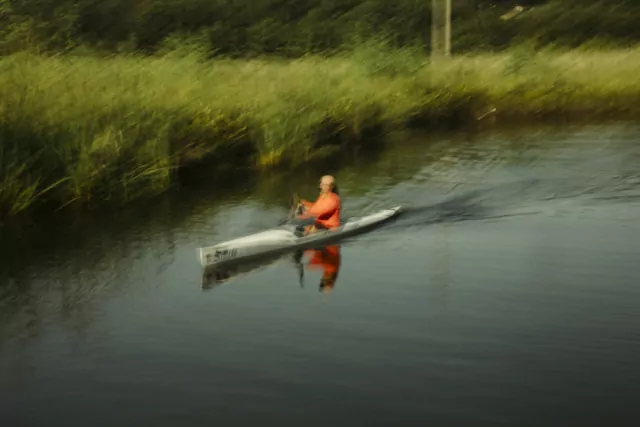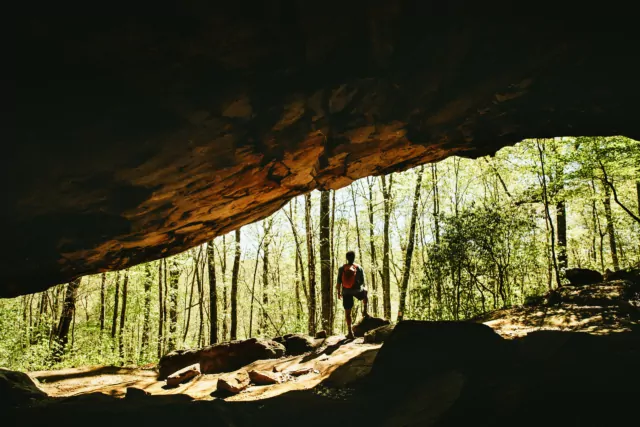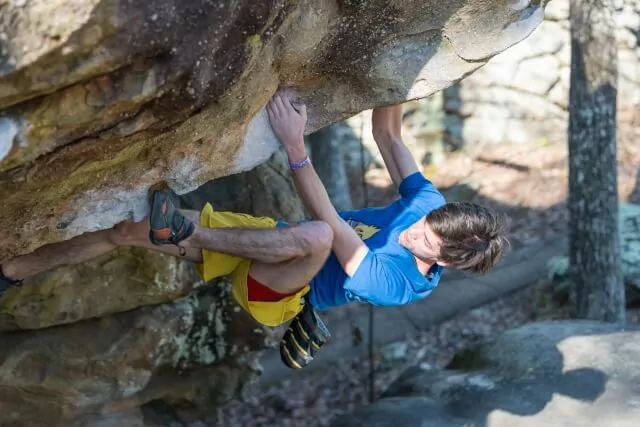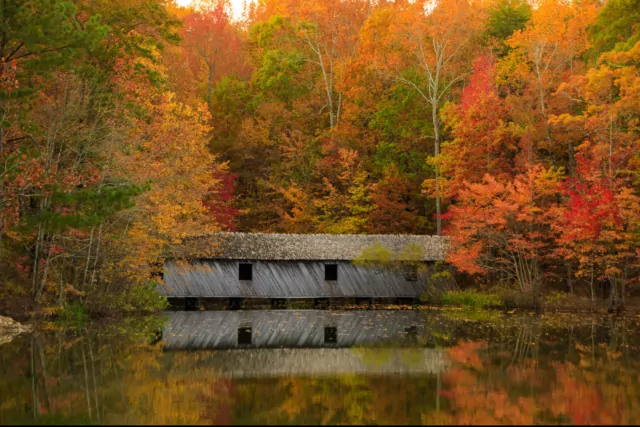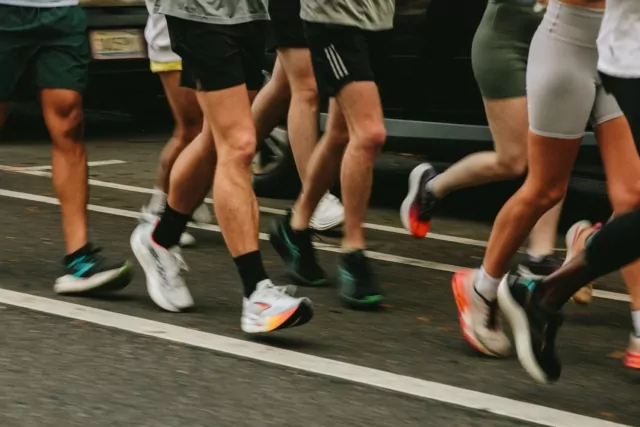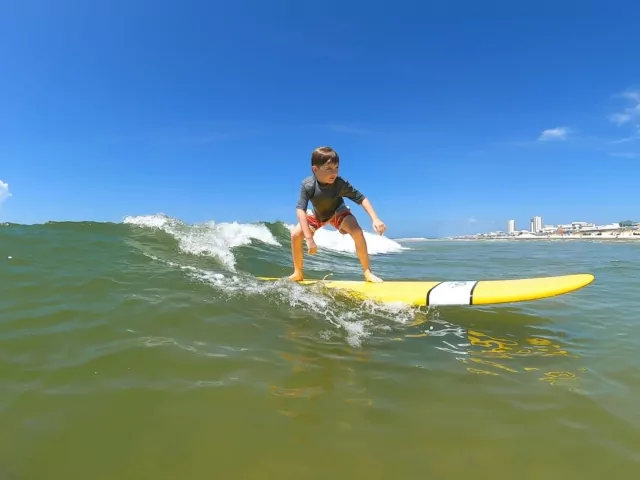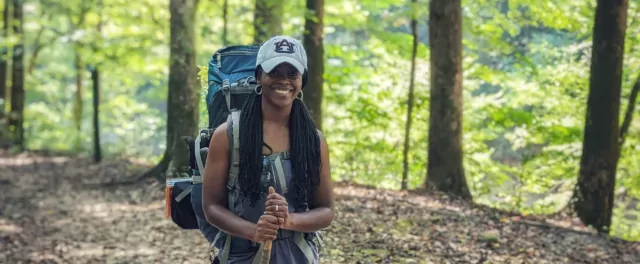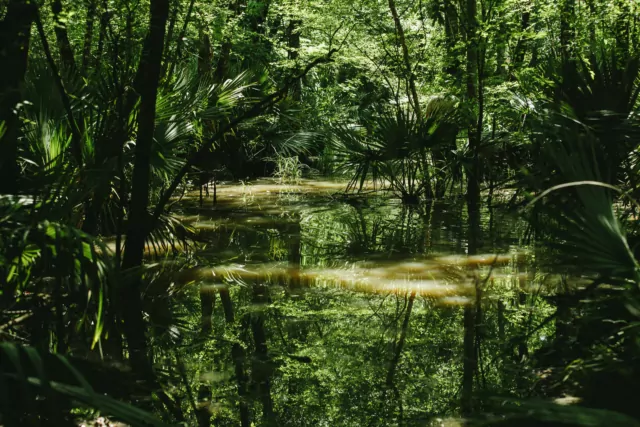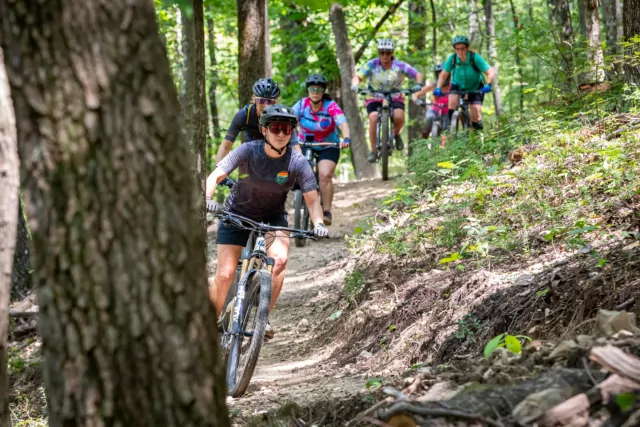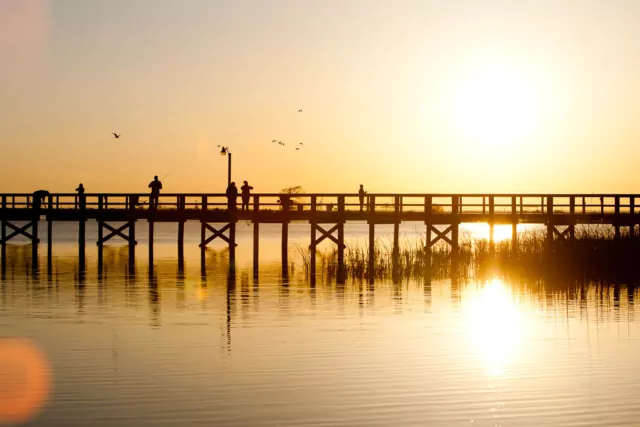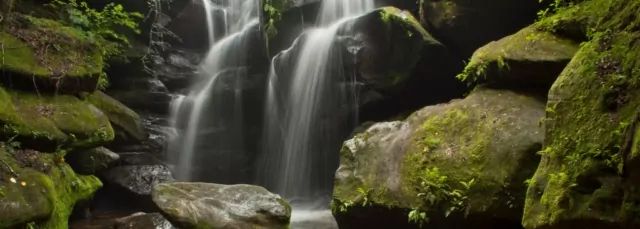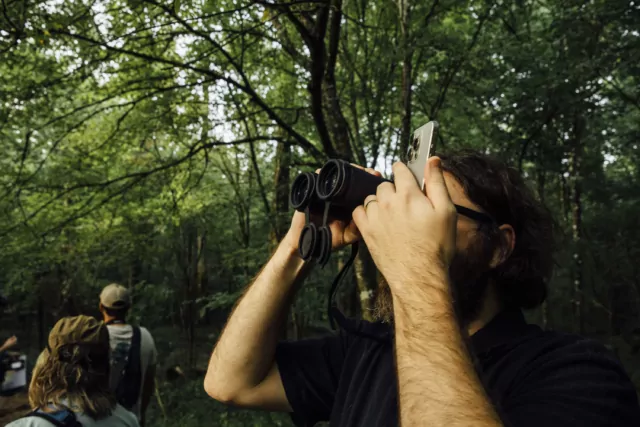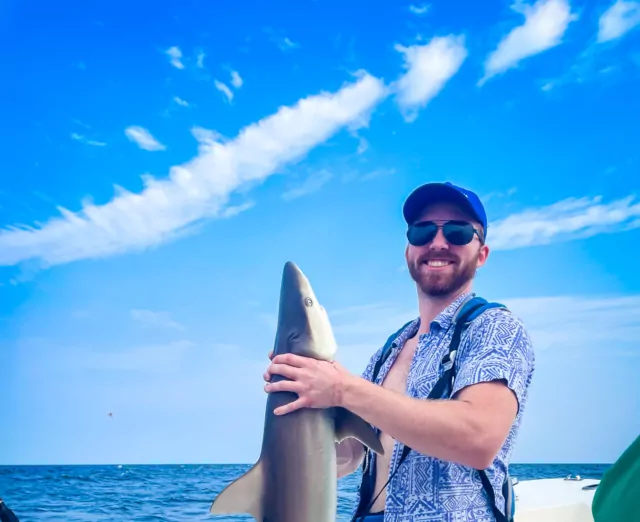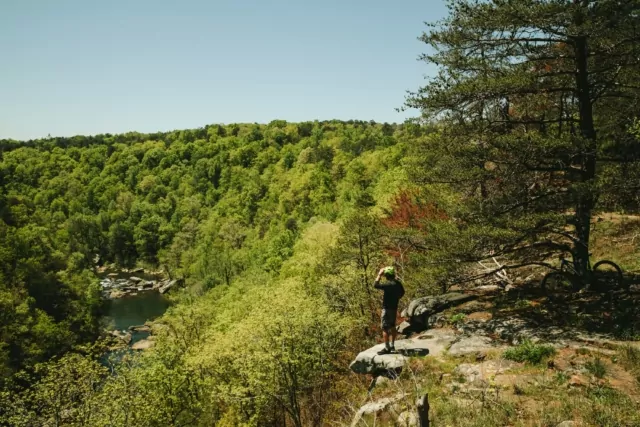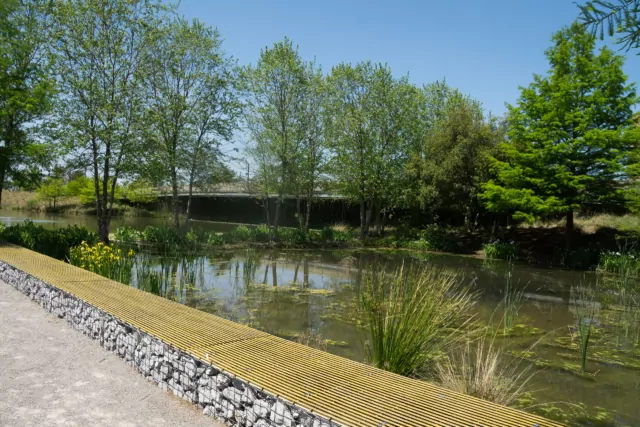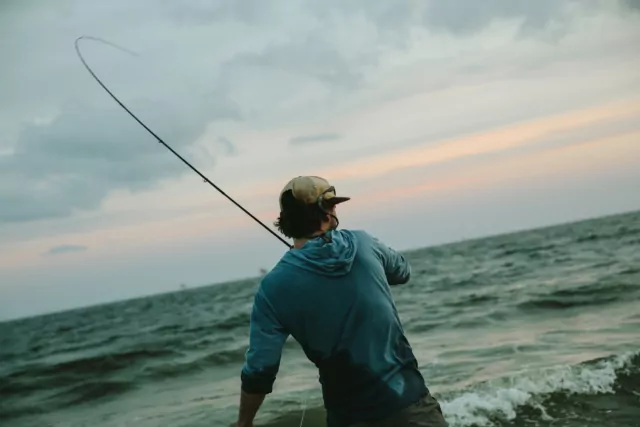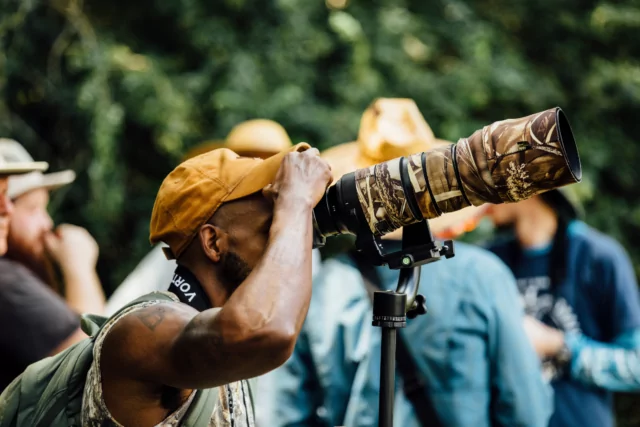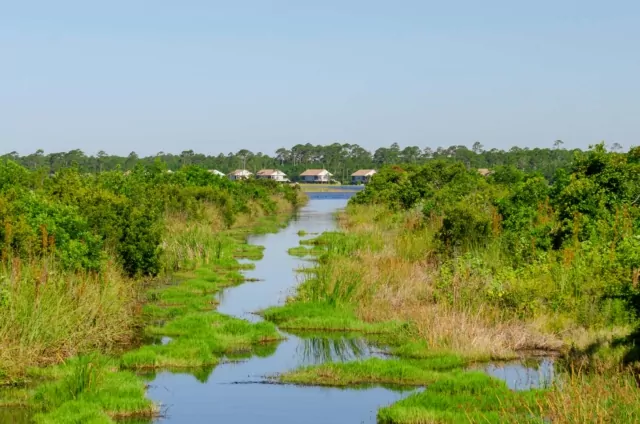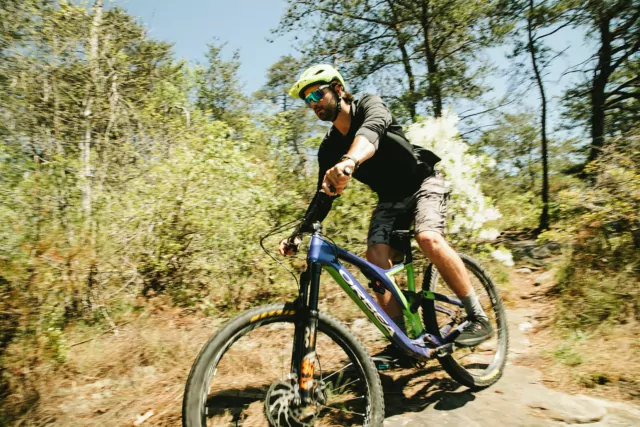On September 21, as the sun rises over Weiss Lake in northeastern Alabama, a group of elite paddlers will embark on a journey like no other – the longest annual paddle race in the u.s., The Great Alabama 650, now in its sixth year.
This extraordinary event challenges athletes to navigate 650 miles of Alabama’s diverse waterways in just ten days, testing their physical and mental limits.
This grueling race, which follows the core section of the Alabama Scenic River Trail, showcases the state’s incredible natural beauty and varied landscapes. From the Appalachian foothills’ rushing rapids to the Mobile-Tensaw Delta’s tranquil waters, competitors will experience a unique paddling adventure filled with excitement and unpredictability.
“There’s no other race like it anywhere in the world,” says Greg Wingo, the race director. “It is the crown jewel of paddling.”
“It’s all about the water experience. There are plenty of other wonderful races happening all across the country, but none of them have the variety,” says Andrew Syzmanski, executive director of Alabama Scenic River Trail (ASRT) and a member of the Innovate Alabama outdoor recreation council. “There have been years where we’ve launched in October, and it’s 60, 65 degrees in North Alabama and 88, 90 degrees down in Fort Morgan. So you get this wonderful experience of being in North Alabama, coming through Weiss Lake, then going down and experiencing cooler, more fast-moving waters, some class one, two, and sometimes three rapids. After you finish that, the Alabama River gets really wide and super deep. It almost feels like the water is flowing backwards against you because it’s so slow.”
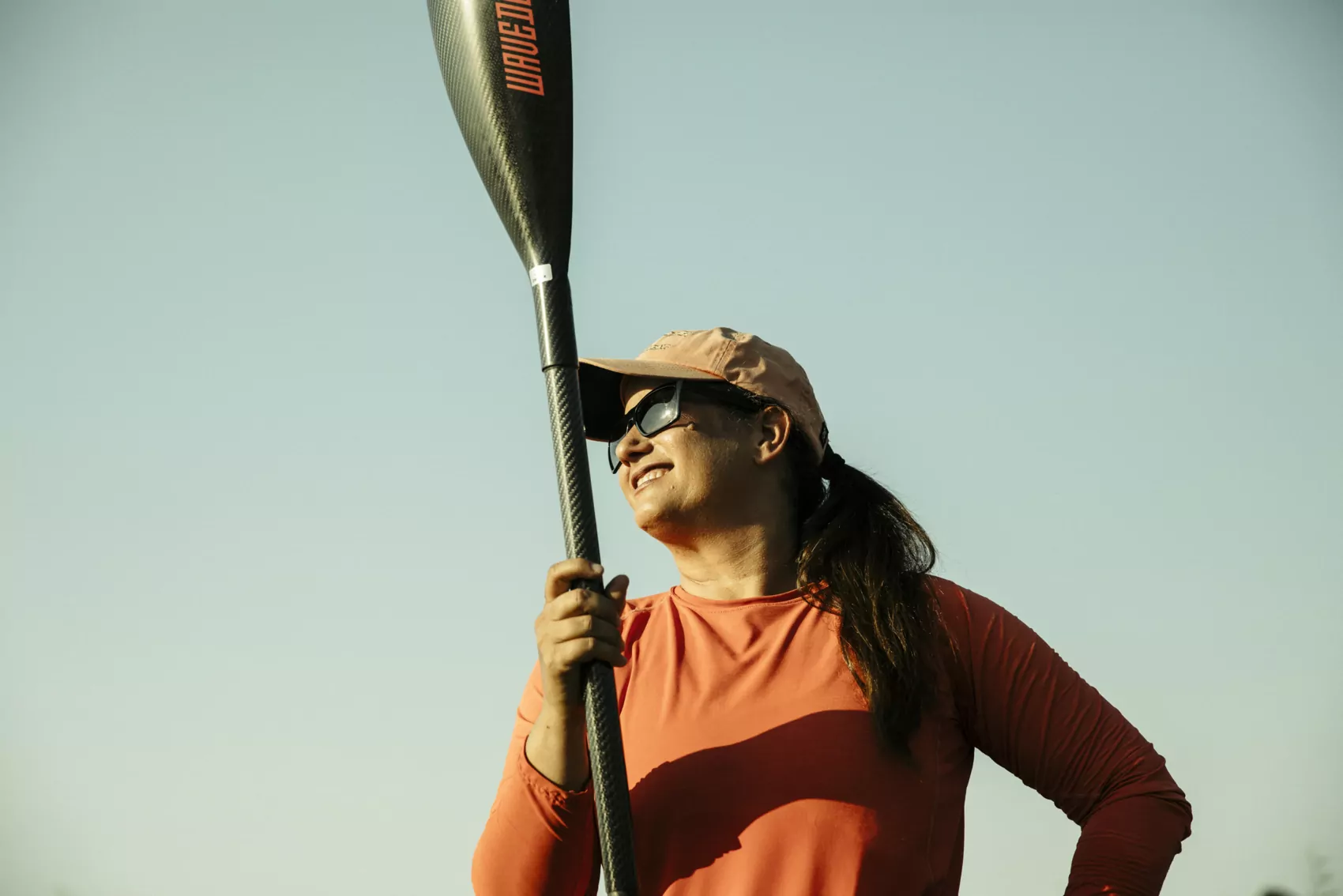
Ryan Gillikin, who has completed the Great Alabama 650 four times and placed first in 2019 as part of a tandem team, says the combination of water keeps her coming back year after year. “I like the whitewater because it breaks the race up. Same thing with Mobile Bay. And those are the most challenging sections and the most fun to do.”
The race is divided into three categories: Male Solo, Female Solo, and Two-person Tandem. Each category offers a $2,000 prize, attracting top paddlers nationwide and from as far away as Canada and Germany, and in order to enter the Great Alabama 650, racers must have competed in at least one of about 20 other qualifying races around the world.
Competitors can also choose their race vessels (canoes, kayaks, stand-up paddleboards, etc.), adding another layer of diversity to the event. “That’s what makes this race unusual—it’s any arm-powered paddling craft you choose,” says Wingo. He also distinguishes between paddling and rowing, which is not allowed. In rowing, the racer’s back faces the direction traveled, whereas a paddler faces forward.
Another advantage of the Great Alabama 650 that sets it apart is that racers can choose different crafts for different sections of the race. “In most races like this around the world, you get in your one craft, you go all the way to the finish in that one craft,” Wingo explains. “We’re a little bit different because we let you change out. Paddling from flat water to whitewater to tidal water to the bay – those different types of water work better with different types of craft.”
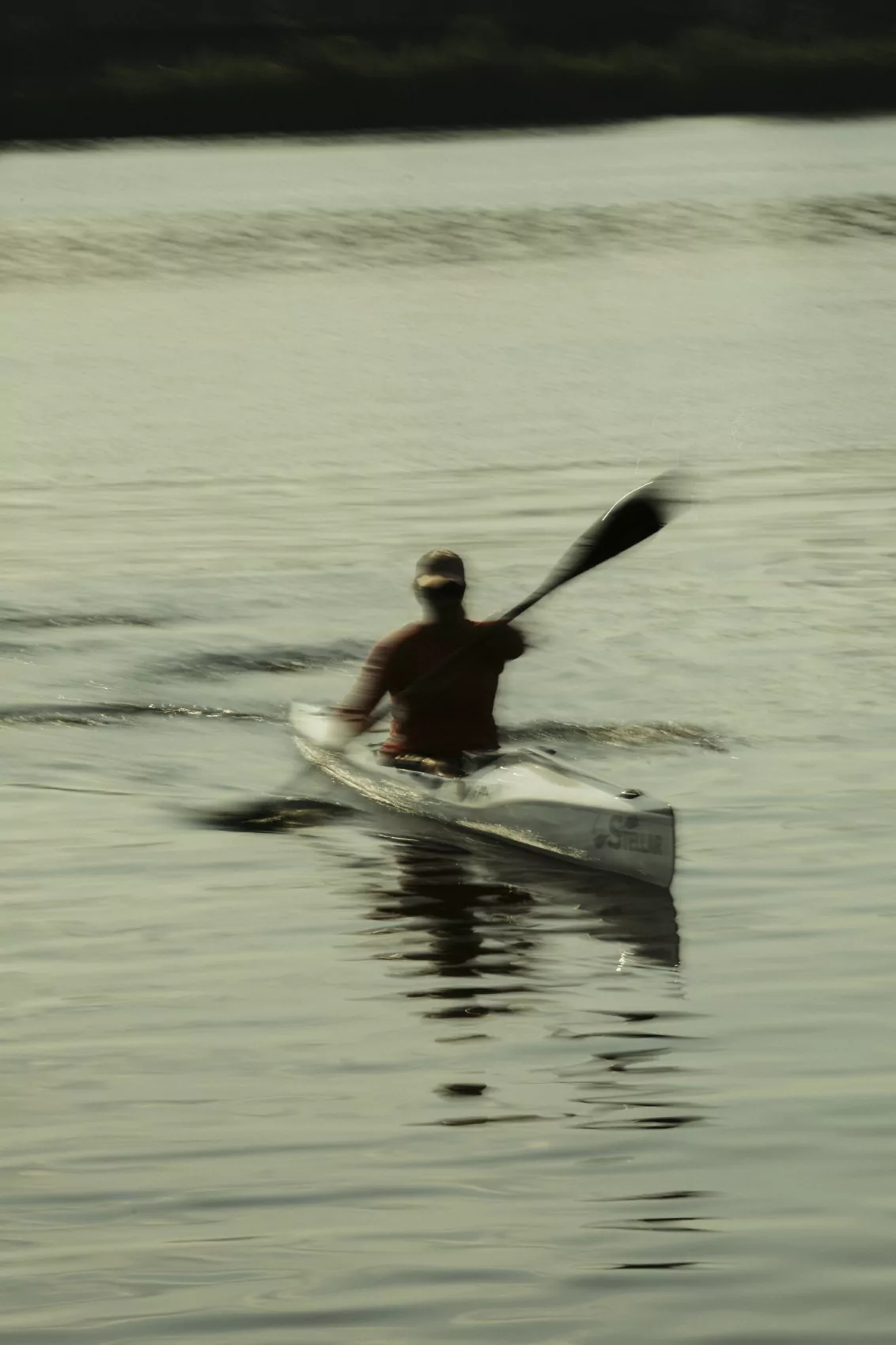
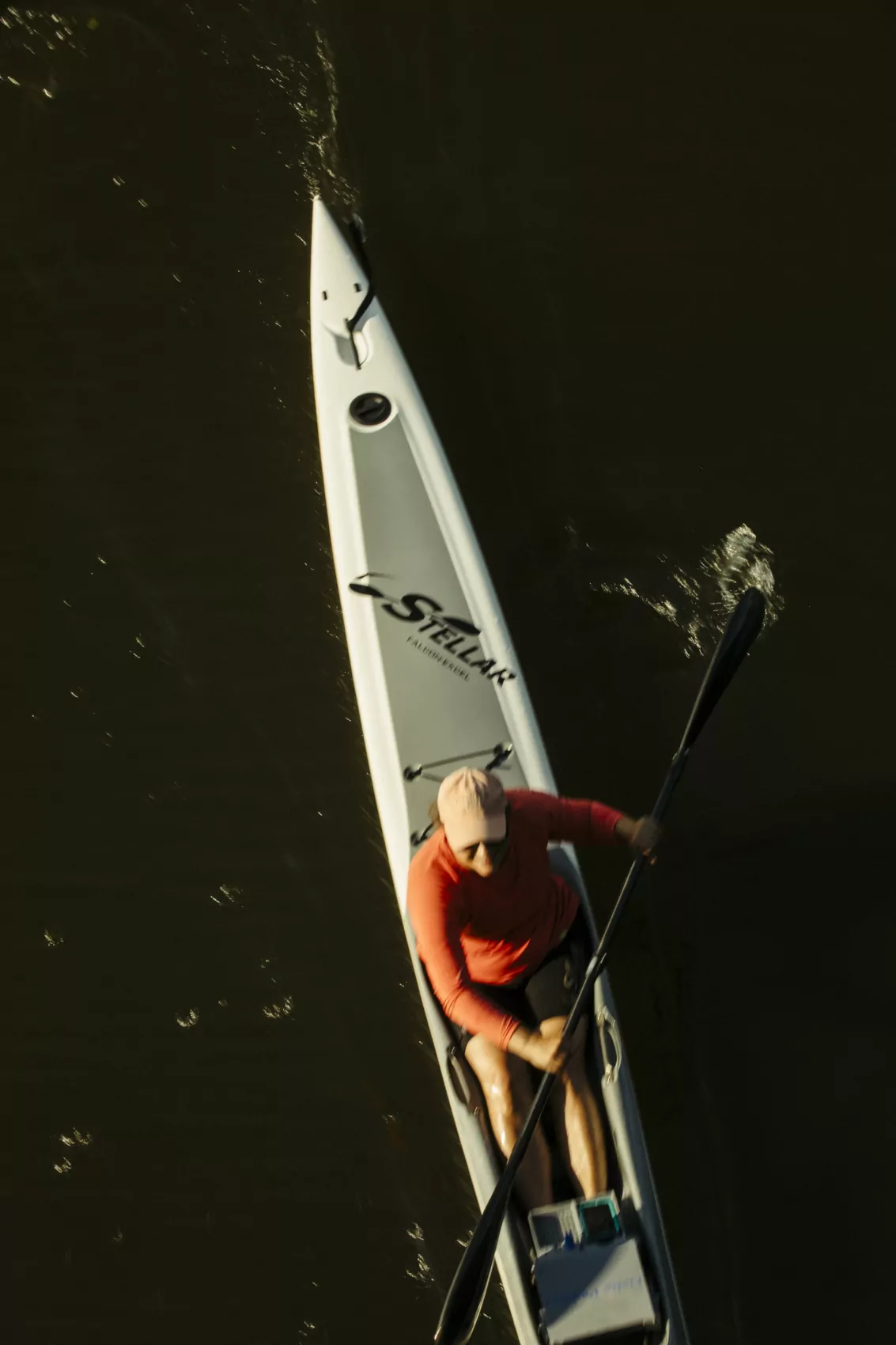
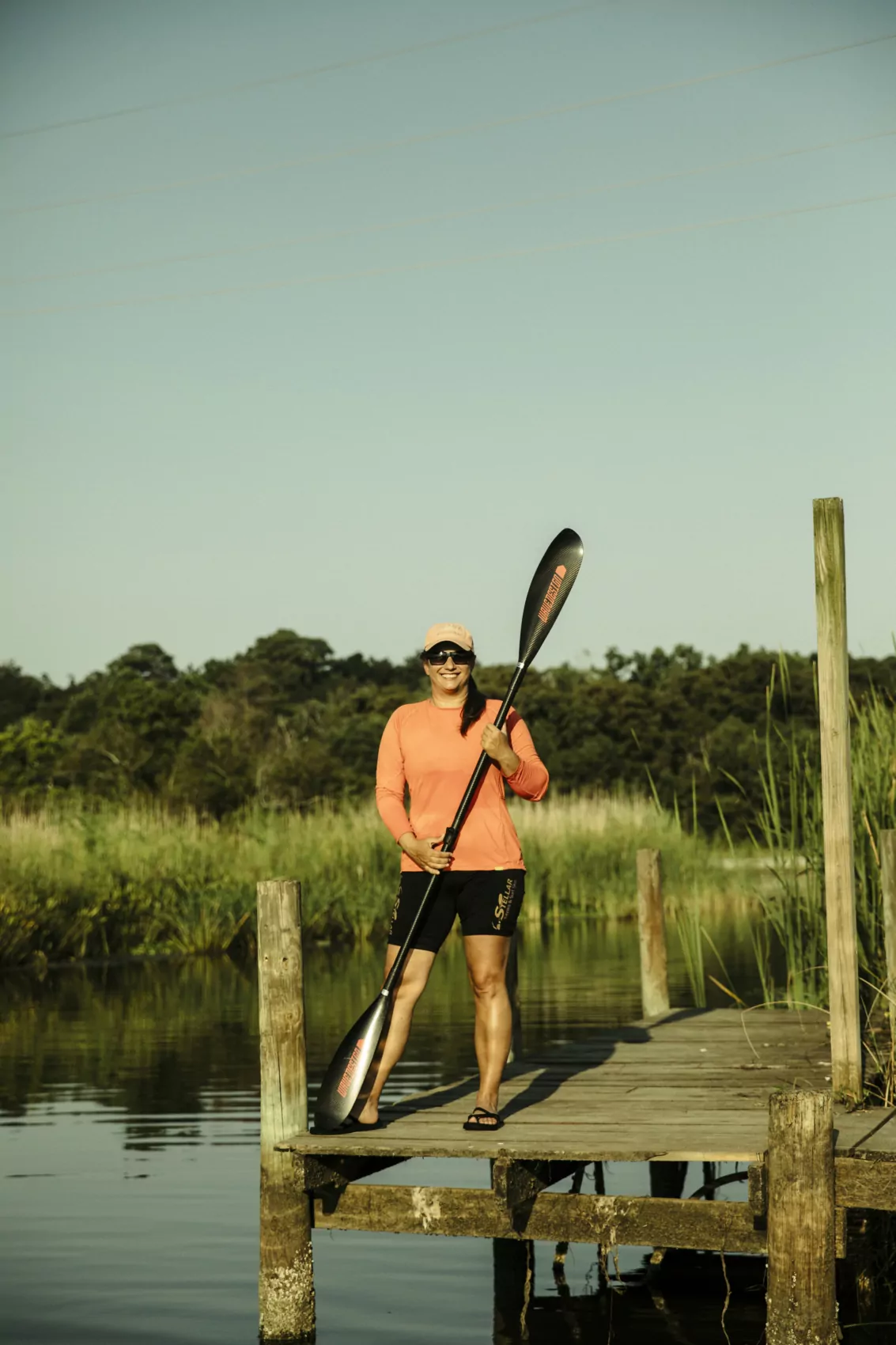
FINDING COMMUNITY ON THE WATER
Each boat, whether it’s a solo racer or a team, must have at least one person who follows them on land – their “crew.” The crew meets the racer(s) along the trail for portage assistance, meals, rest breaks, wellness checks, equipment changes or repairs, encouragement, and anything else a competitor might need to continue. Often, a crew member is a coach, family member, or friend, but in the case of Mirko Pruefer, a racer from Germany, his crew was a stranger who became a trusted friend.
“He’s paddled in adventure races all over the world and had heard about this race. Well, Mirko didn’t know anybody in the United States, and nobody from Germany was willing to travel with him,” recalls Syzmanski. “So he got connected with a woman who offered to be his crew, then the next year, he flew back to the United States to crew her so she could do the race.”
“Crew members selflessly give up so much of themselves to help out someone else,” says Wingo. “It’s a testament to how awesome and amazing crew people are and how important they are to the racers.”
O’Donnell, who will turn 65 in October, practices with her husband/coach seven days a week. Gillikan, who started racing at age 40, practices with a group. “It used to just be just me by myself at three in the morning, paddling and training,” Gillikin recalls. “Now, a bunch of us get together and train when we can. It’s been fun to see the community grow.”
A TRANSFORMATIVE EXPERIENCE
As racers make their way down the state, they pass through or near several major Alabama cities, including Gadsden, Birmingham, Montgomery, and Mobile. And each racer has their favorite part.
For Salli O’Donnell, it’s a section of whitewater between Jordan Dam and Wetumpka. “The first couple of years, I made sure I did it during daylight, but the last few years, I’ve been doing it at nighttime, and it’s just crazy,” says O’Donnell. “That is my most enjoyable section, but also the one that puts the fear in me quite a bit because of all the unknowns. And now that I started doing it in the dark, I just trust my boat and the flow of the water and that it’ll hopefully take me through the best route.”
With a laugh, she adds, “God loves a fool, I hope you know, because we’re being fools here.”
And yes, you read that right, O’Donnell did say she was doing this section in the dark, but to win, racers must paddle through the night, often only stopping for a few hours of rest. People who don’t paddle might think that being alone on the water in the dark would be scary, but for people like Gillikin and O’Donnell, being in that space is an almost spiritual experience.
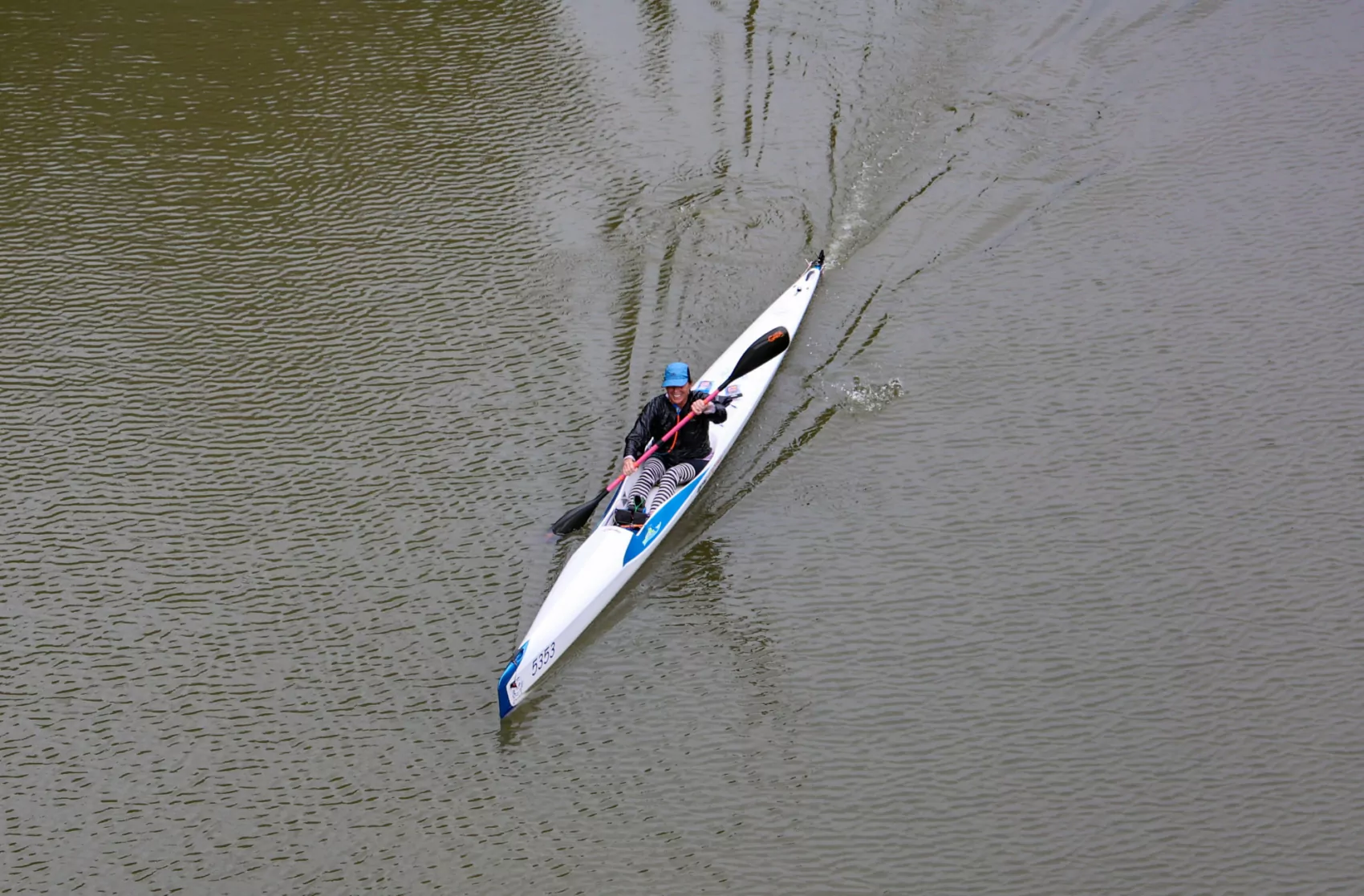
“It has its moments when it’s two in the morning, and you’re on the water, and you’re hallucinating. It’s a weird feeling. You can’t stand up; you can’t lie down. You’re just stuck in that one position sitting in your boat. But it cools off. It’s quiet. The wind dies down. And that’s when you do some of your best paddling,” says Gillikin. “Then there’s the time I call ‘the dark dark’ between the sun setting and the moon rising. I get out there in the dark dark, and I have to use my GPS to stay on the river because I can’t see the bank, and I hope I don’t hit anything. But then, once the moon comes up, it all gets better. Everybody knows about sunsets and sunrises, but I’ve seen a lot of moonsets and moonrises, and those are beautiful, too.”
O’Donnell remembers a special time after a particularly dark night. “One morning after Claiborne [in Monroe County], the water was like glass, and the clouds were puffy as the sun rose. It started with a little bit of fog, but once the fog lifted, I could see the mirror reflection of the sky in the river. It was this weird phenomenon where I couldn’t tell what was the sky and what was the water. It was an amazing sensation, just beautiful.”
“By the time they’re getting off [the water], they’ve almost forgotten that three, four, five, six, eight days ago it was 30 degrees cooler and it was quiet or that they were on Lake Jordan,” says Syzmanski. “And the whole time on that Sunday [the race finishes], people are driving by in their boat, trying to give them beer and bananas and Gatorades and cheering them on. It’s an unforgettable experience because you’re traversing the entire state. And that core trail, which is what Alabama Scenic River Trails was founded on, is one of the most impressive paddling trails in the United States.”
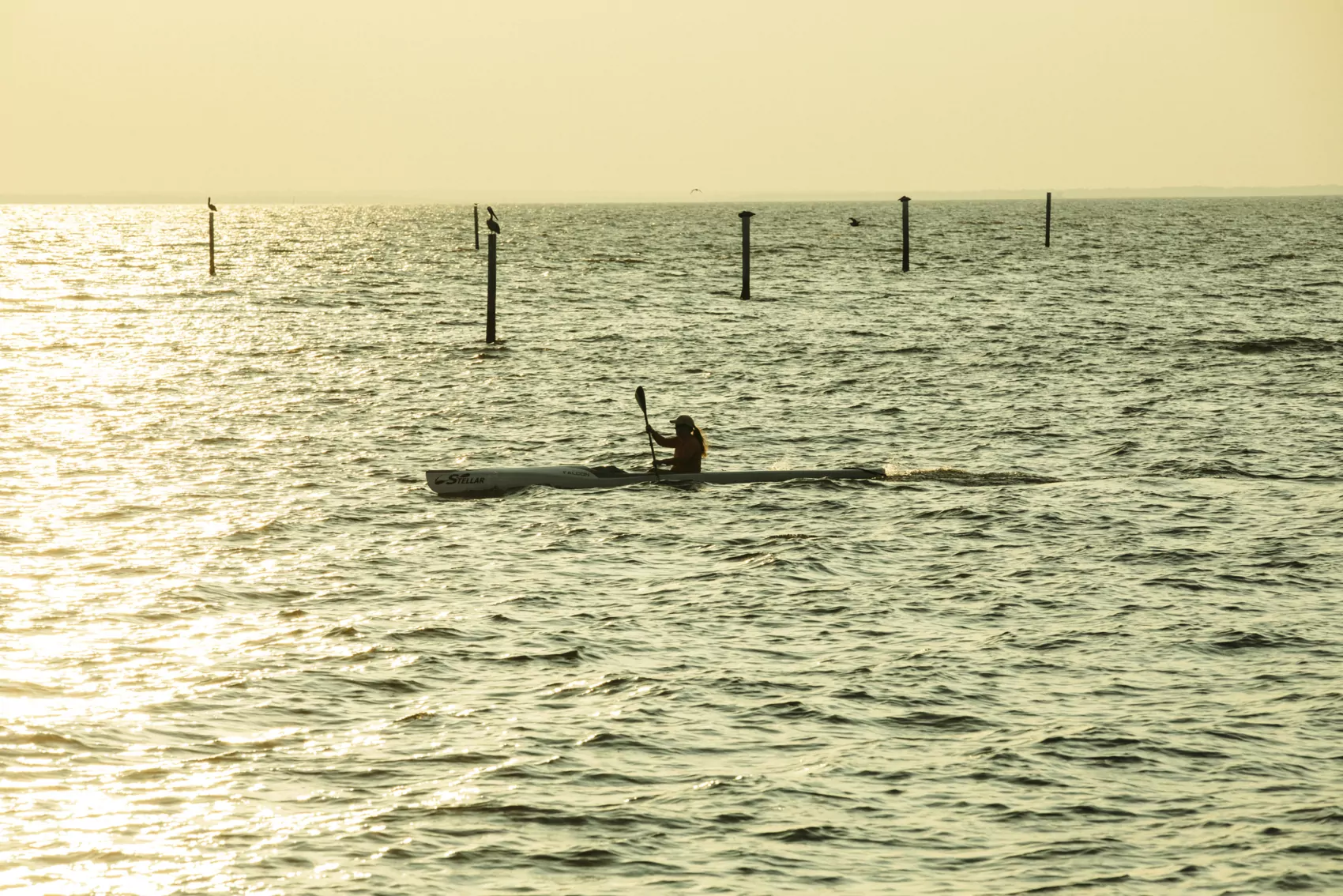
AN EXERCISE IN CONSERVATION
The Alabama Scenic River Trail is a testament to the state’s commitment to outdoor recreation and conserving our waterways. As the longest river trail in a single state and the longest National Water Trail, it’s an urban-to-wilderness route that showcases the state’s ability to balance development with natural preservation, making it an attractive destination for outdoor enthusiasts and water sports lovers.
“Our job is to promote the recreational use of Alabama’s fresh waterways,” says Syzmanski, emphasizing the organization’s broader mission. “We’re not a conservation group, and we’re not an environmentalist group. We believe that the more people that get out on the water, the more environmentalists and conservationists there will be.”
The race route passes through critical ecological areas, including the Mobile-Tensaw Delta, often called “America’s Amazon” due to its incredible biodiversity. This ecological richness is a significant draw for many who choose to make Alabama their home. And the state’s commitment to preserving its natural resources while making them accessible for recreation sets it apart as a destination for outdoor enthusiasts.
“It’s essential to showcase to racers what paddling the waterways in Alabama is like. But it’s even more so important to show to the rest of the world that’s watching the race what Alabama has and why they should want to come here to either recreate or to live and access these waterways,” says Wingo.
THE SUM OF ITS PARTS
The Great Alabama 650’s creation in 2019 was a natural extension of the ASRT’s mission. By attracting elite paddlers and media attention, the race has helped put Alabama on the map as a premier destination for water sports enthusiasts. But the race isn’t just about elite athletes. It has also inspired more casual paddlers to explore Alabama’s waterways.
Much like the Appalachian Trail, people who are not adventure or distance paddlers will often target a different section of the Alabama Scenic Rivers Trail each year until they’ve completed the whole thing. “We have many people outside of the race, so many people that love doing that core 650 miles,” says Syzmanski. “Because there are so many different sections and different water types, people come to Alabama to bite it off in chunks as they can.”
Wingo says that the typical trip for a non-racer to do the entire 650 miles takes between three weeks and a month. “It is a very doable thing,” he says.
But few people—as in only three—have done it faster than O’Donnell, the solo female winner all five years the race has existed. In 2021, she finished the course in a record-setting four days, 22 hours, 39 minutes. “That was a magical year,” she recalls. “But if there happens to be another high water year like that and somebody wants to push, that record will fall.” [Joe Mann and Paul Cox hold the overall record and tandem record of four days, 17 hours, two minutes, and West Hansen holds the male solo record of five days, 19 hours, nine minutes.]
ASRT offers resources for paddlers of all skill levels, including information on campsites and outfitters, mile markers along paddle trails, and programs to introduce children to paddling. The organization also highlights unique seasonal paddling experiences. While the Great Alabama 650 takes place in the fall, paddlers who choose to make Alabama their home can enjoy year-round water activities. Spring brings lush greenery and flowing rivers, summer offers warm waters perfect for swimming and fishing, fall showcases spectacular foliage, and winter provides serene, crowd-free paddling opportunities.
That’s why, in partnership with the Alabama Tourism Department, the ASRT is creating a series of one- to three-day itineraries called 52 Weeks on the Water. Each trip features experiences on the water and off for non-paddlers, put-ins and take-outs, distance, and estimated completion time.
“You get bigger runs like a 19-mile paddle all the way down to Selma, Alabama, under the Edmund Pettus Bridge, or you can do something like Cane Creek where you can explore the falls,” says Syzmanski. “We encourage people to get out and explore something a little bit different than what you might find in other states. It reminds people that even when it’s not necessarily paddling time, you can have the opportunity to get out and enjoy Alabama’s waterways.”
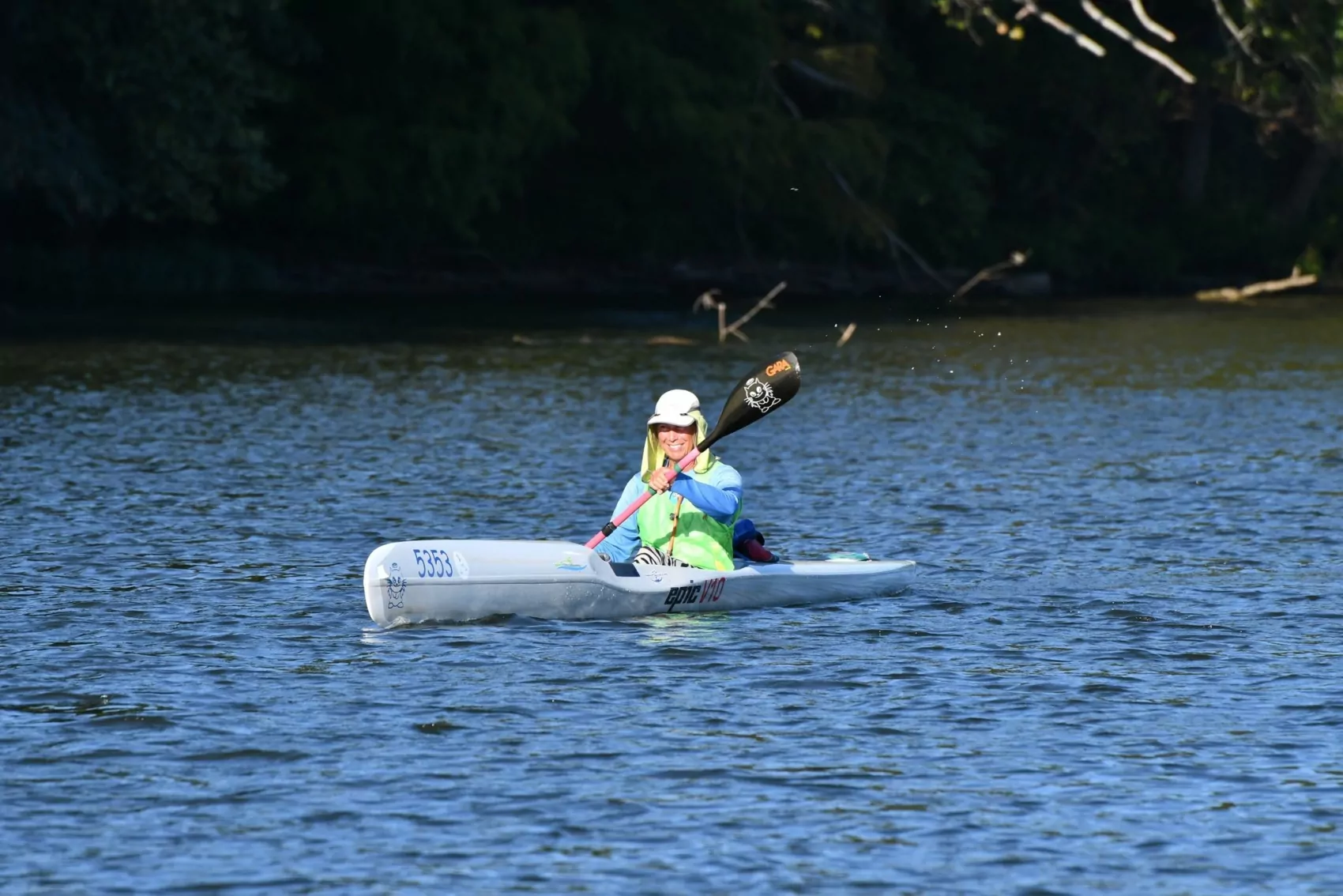
THE RIPPLE EFFECT
Beyond the race, the Great Alabama 650 has spurred economic growth in communities along the race route. Local outfitters, restaurants, and accommodations have seen increased business as more people discover Alabama’s paddling opportunities. This economic boost has led to improved infrastructure for paddlers, including new access points and camping facilities along the state’s waterways.
The race has also fostered a strong sense of community among paddling enthusiasts in Alabama. Local paddling clubs have grown, and events celebrating the state’s water resources have become more common. “The recreational paddling community is huge here, and there are groups that paddle every day,” says Gillikin. “There are unlimited paddling opportunities in Alabama.”
This community includes a network of volunteers and “trail angels” supporting racers and recreational paddlers along the route. “Trail angels are people who have offered to give some sort of service back to people who are paddling our waterways, whether that’s assistance with getting a boat around a dam or having a designated campsite on their property by a waterway,” says Wingo. Some even open their homes to paddlers for meals, showers, and sleeping.
The Great Alabama 650 embodies the spirit of adventure and connection with nature that many people yearn for. And Gillikin encourages people not to be intimidated by the distance or the perceived physical ability necessary to complete it. “When I started paddling, I couldn’t run a mile, and I couldn’t do a push-up,” she laughs. “But paddling is different, and it requires a different set of skills. So if you haven’t found your sport yet, maybe you need to try paddling.”
As the sun sets on Fort Morgan and the final paddlers complete their journey, the Great Alabama 650 will once again demonstrate why Alabama is becoming a top destination for water sports enthusiasts. With its diverse ecosystems, abundant waterways, and commitment to outdoor recreation, Alabama is poised to become the next great adventure destination in the United States.
So whether you’re drawn by the challenge of the Great Alabama 650 or simply the allure of year-round paddling opportunities, Alabama’s waterways are calling. Answer that call, and you might just find yourself making Alabama your permanent paddling paradise.
